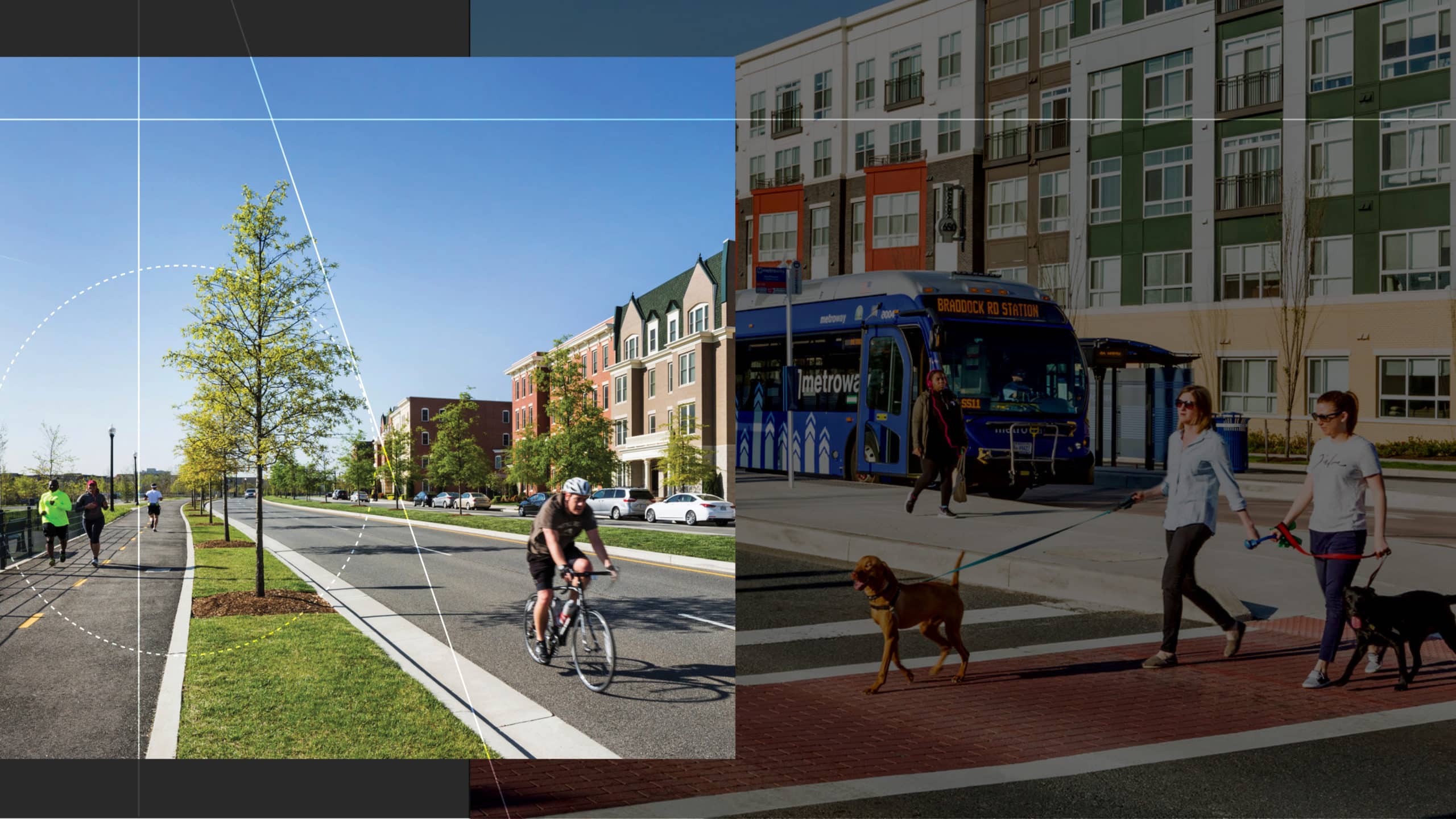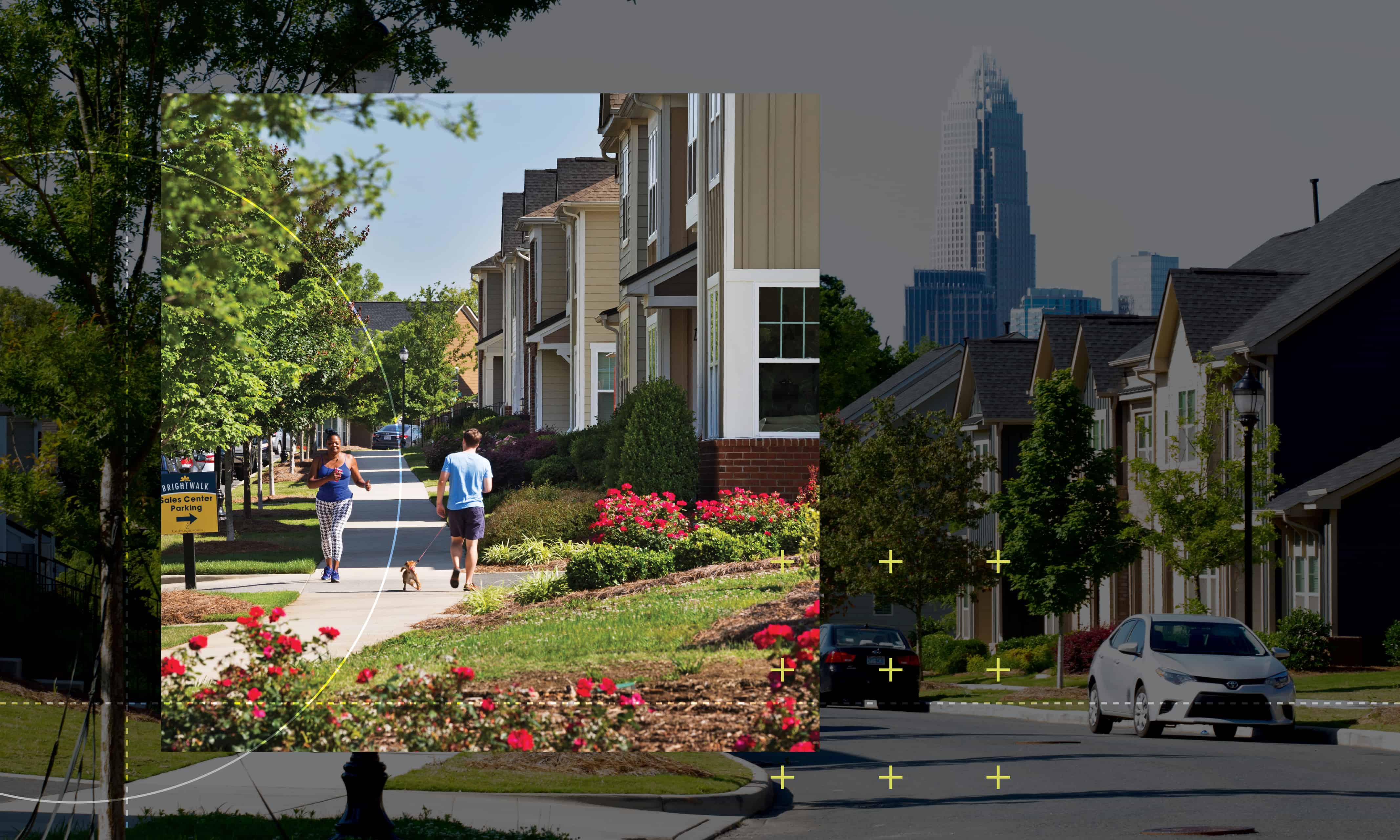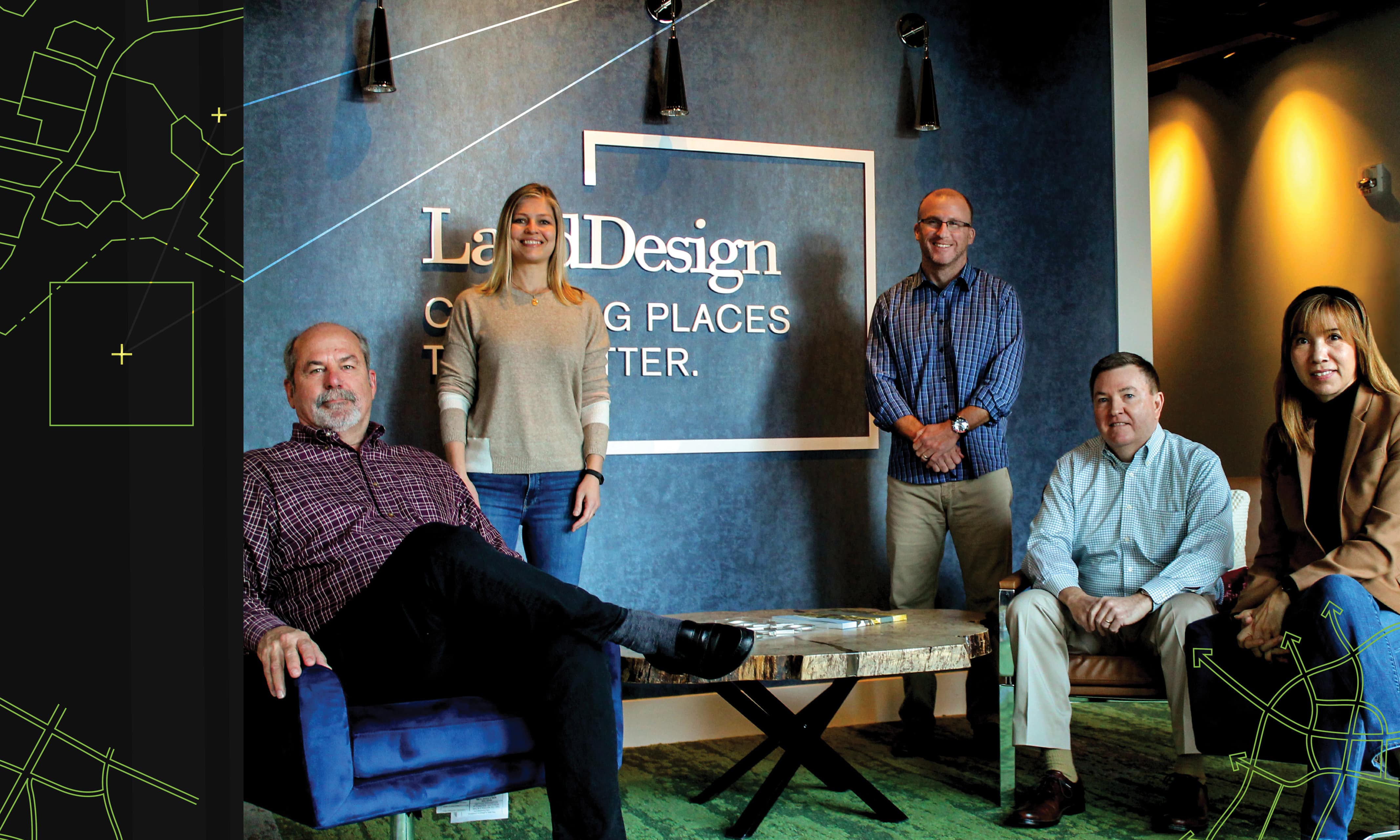According to the Charlotte Transportation Department (CDOT), there is an average of one pedestrian death every other week in this city. In response, the Vision Zero plan, implemented by CDOT, intends to completely eliminate all traffic-related deaths and serious injuries by 2030, but the program needs participation and support from those that shape our city.
Where does that put the design world when it comes to pedestrian safety? It puts us, civil engineers and landscape architects, at the forefront of the effort to make cities safer for the community at large. At LandDesign, we recognize our role in shaping communities and our influence on rapidly-growing cities like Charlotte. This is why we incorporate pedestrian safety elements into our projects. We use design elements such as pedestrian refuge islands, dedicated bike lanes and wide multi-use paths to make Charlotte a safer community.
According to the National Highway Traffic Safety Administration (NHTSA), 76% of pedestrian fatalities happen in urban settings. Rea Farms, a new mixed use development in one of Charlotte’s most loved suburbs, is a great example of where we have used a variety of elements to create a safe and enjoyable experience for people, as the area becomes more urbanized. We included crosswalks to connect the neighborhood to the south of Ardrey Kell Road so the community has a safe way to access the development. Sidewalks are designed to run along Ardrey Kell extending to Stone Creek Ranch, the neighboring community to the west. This too will encourage pedestrians to partake in the new mixed use area, while giving them a protected way to get there.
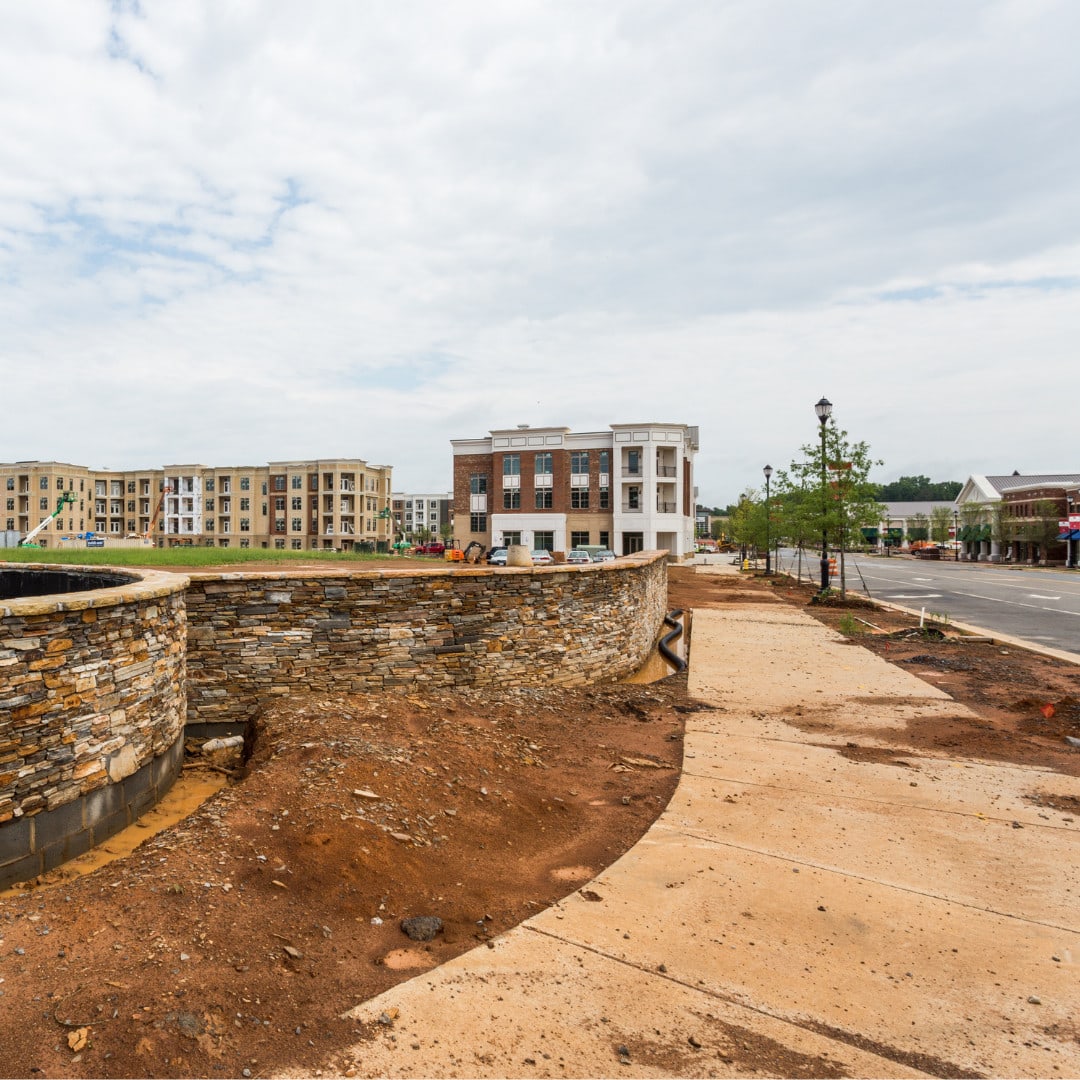
Pedestrian fatalities are located outside of intersections 72% of the time, says the National Highway Traffic Safety Administration (NHTSA).
Pedestrian refuge islands provide people on foot a safe place to stop if they cannot make it across the road within the allotted time. Camp North End has several pedestrian refuges at intersections and at mid-bock crossings, giving people more protected places to cross the street. Our design of mid-block crossings discourage crossing outside of these designated areas, keeping people safe at the crossing locations.
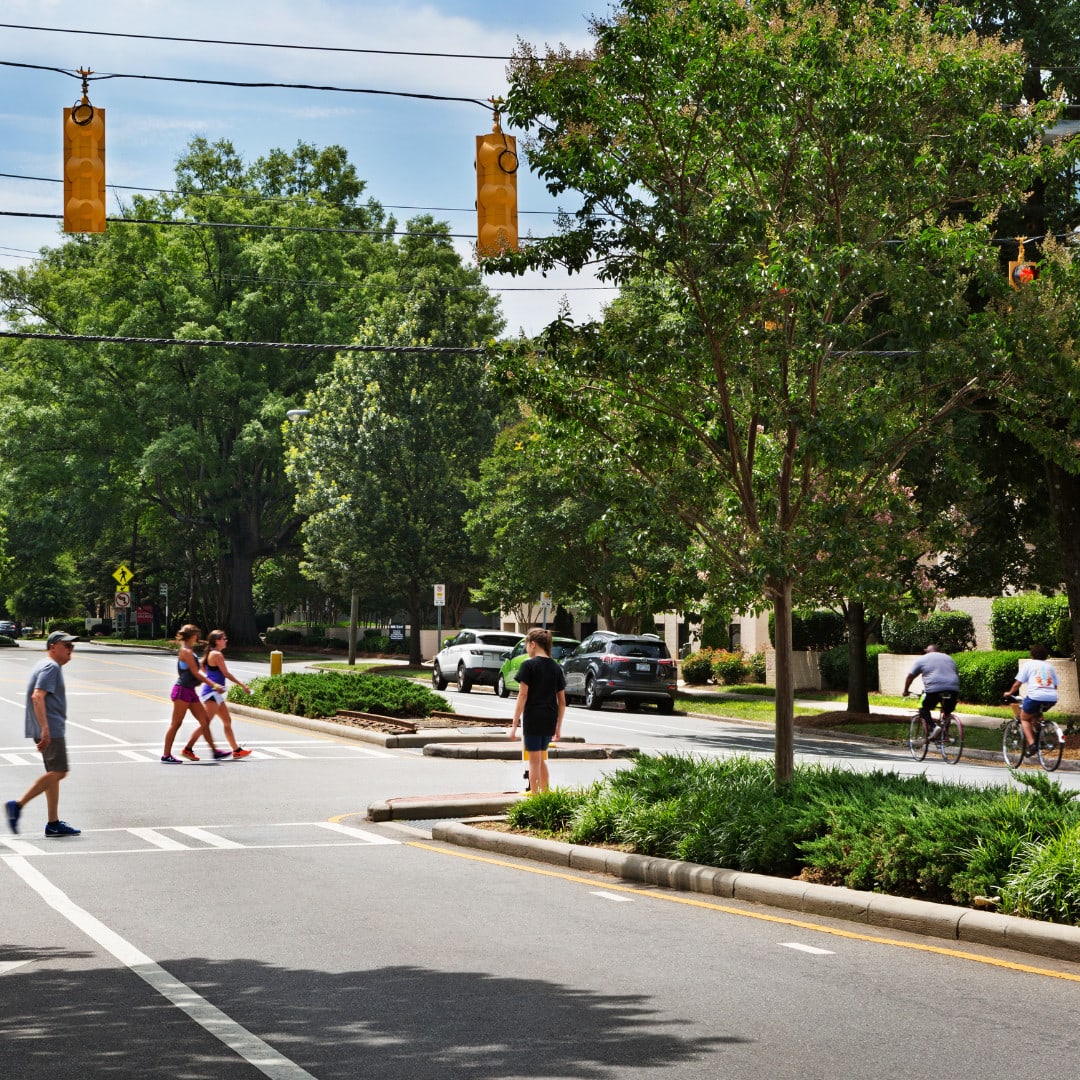
Many of our projects have reshaped intersections to make the crosswalk more perpendicular to the street, which gives the walker a shorter distance to travel in the roadway. The idea of designing a city around personal motor vehicles is changing to the idea of designing for the non-motorist. Pedestrian and non-motorist safety is very important as the city continues to grow and change. Dedicated bike lanes give more room to motor vehicles and cyclists so they can share the road in a safer way. It allows the novice biker to feel comfortable navigating the roadways without fear of incident with a vehicle.
On the bridge on Providence Road over I-485 in Charlotte, we incorporated green thermoplastic paint at the high conflict point where motorists have to turn across the bike lane. This increases visibility to motorist and draws extra attention to the problem area.
There are over 40 growing cities currently committed to the Vision Zero initiative throughout the United States.
In our office across the nation, it’s exciting to be a part of teams across the country working to create safer communities for pedestrians and cyclists!
Janalyn Newchurch, PE Associate + Civil Engineer
